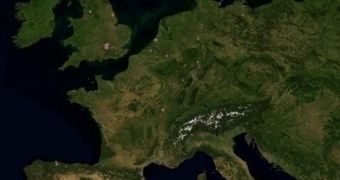Microsoft is building a pioneering environmental observatory together with the European Environment Agency, which will act as the foundation for the Global Observatory for Environmental Change, planned by the EEA. On May 14, 2008, Microsoft announced that it had inked a five-year alliance with EEA, destined to build what the Redmond company referred to as a world-leading online portal, with the initial focus placed on Europe. The partnership is essentially set up as a way to make environmental information available to the general public with the Global Observatory for Environmental Change online-portal acting as the main source.
Professor Jacqueline McGlade, executive director of the EEA, revealed that the portal would enable people across the world, starting with 500 million Europeans in the initial stage, to take part in the process of improving the environment. For McGlade, the collaboration with the Redmond company is simply a guaranteed method to reach an audience as large as possible.
"Global partnerships with organizations, such as the EEA, to address environmental issues worldwide represent one key area of Microsoft's overall environmental sustainability strategy. Combating climate change is a critical challenge facing all governments, and Microsoft is honoured to be working with the EEA to find ways where the power of software can be part of the solution", revealed Jan Muehlfeit, chairman, Microsoft Europe.
EEA aims to achieve a new level of detail in terms of environmental monitoring, building not only a complex global perspective but also focusing on anodyne and localized areas across the world. Via the Global Observatory for Environmental Change, Microsoft and EEA will centralize worldwide water, soil, air and ozone indicators at global, regional and local levels. Microsoft's Virtual Earth will be the platform for the environmental observatory with Windows Live and MSN facilitating access to the data.
"Microsoft continues to explore ways to help solve environmental issues through technology leadership and innovation, and global partnerships. Our collaboration with the EEA is one example of this commitment", said Rob Bernard, chief environmental strategist for Microsoft. "We believe that the combination of real-time information coming from the network of sensors coupled with the analytical and visualization power of software will provide the EEA with a better understanding of our environment. We are excited and honoured to be partnering with the EEA in helping drive global change for the environment."

 14 DAY TRIAL //
14 DAY TRIAL //